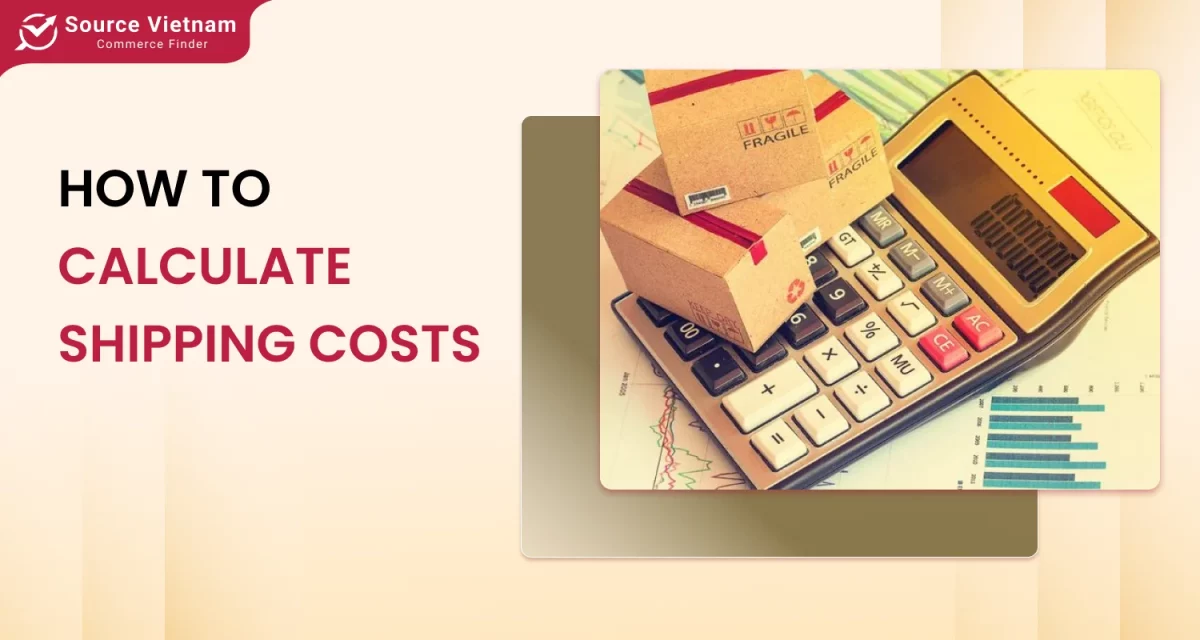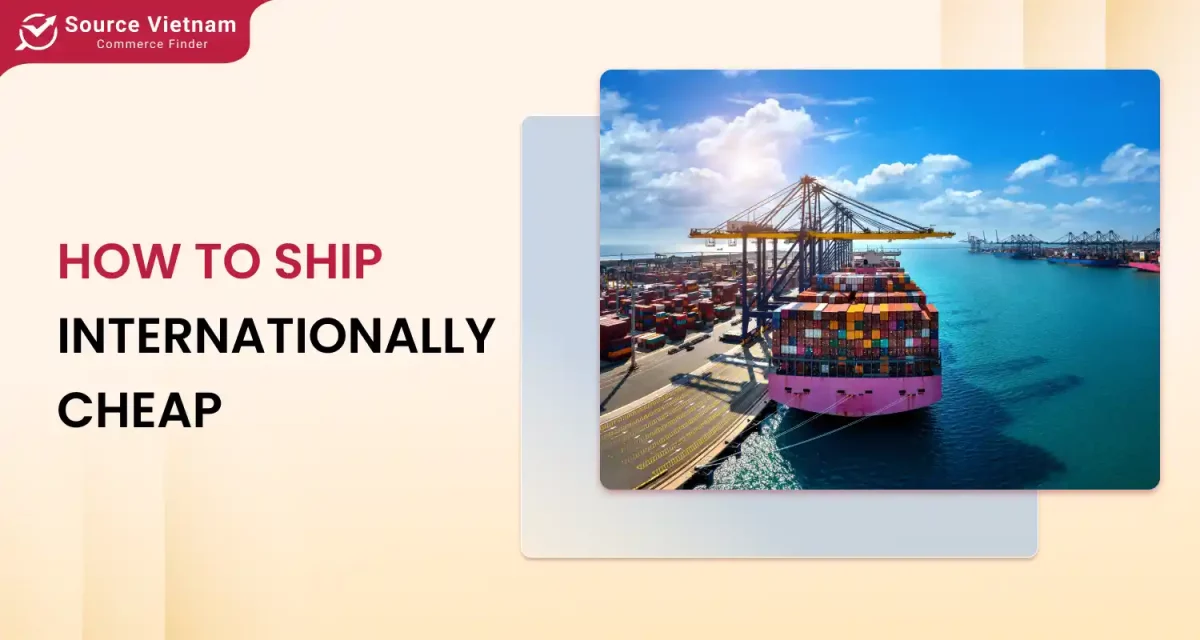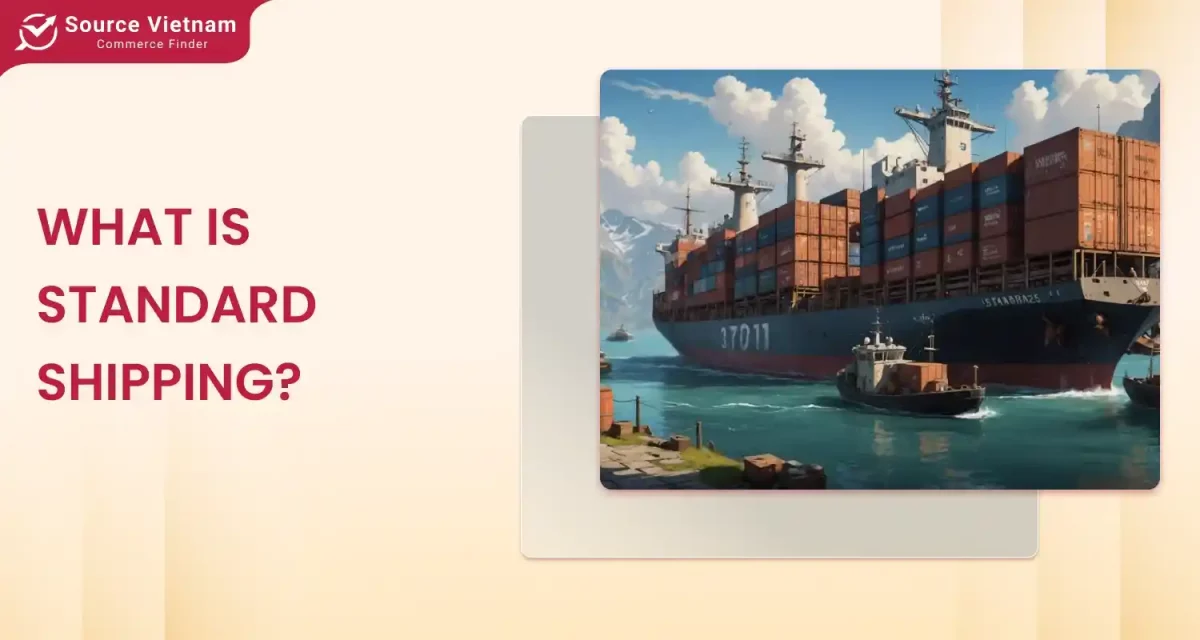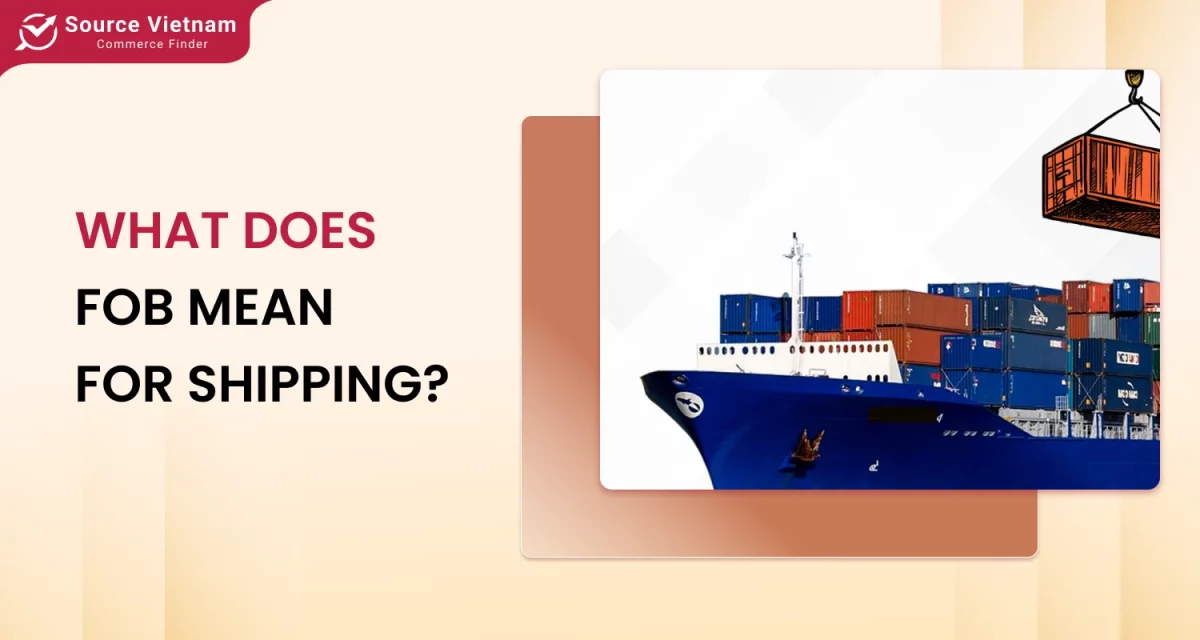When you pick up a bag of snacks, a box of cereal, or even a bottle of water, do you notice the “Net weight” printed on the packaging? This is one of the crucial pieces of information manufacturers must clearly state on their products, playing a key role in helping consumers make smart purchasing decisions.
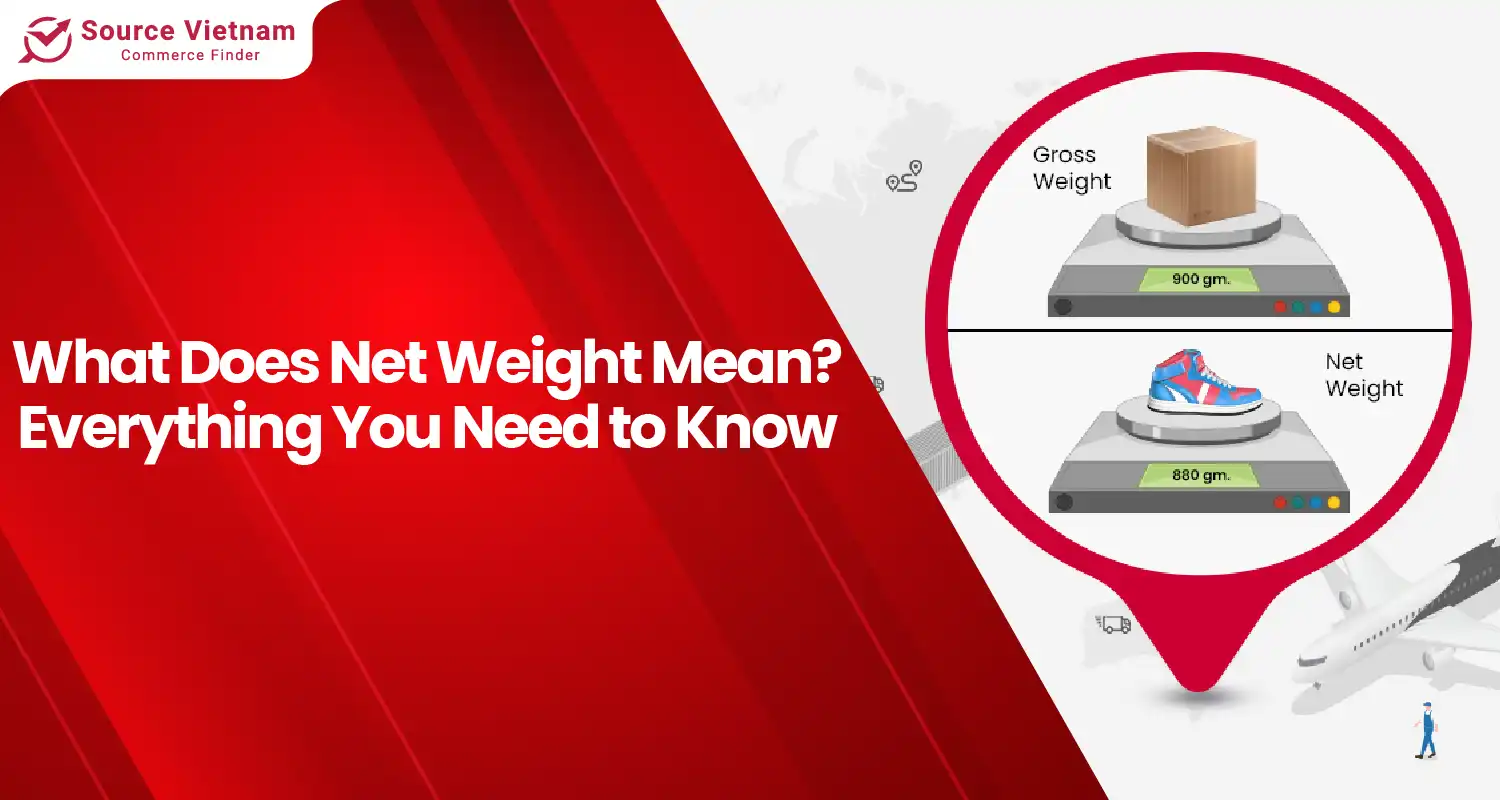
From supermarkets to traditional markets, from online shopping to grocery stores, this term appears everywhere and directly affects how we assess the true value of a product. So, actually, what does net weight mean? Now, let’s find out with SourceVietNam.com in this article below!
Defining net weight meaning
What is the net weight of shipping?
Net weight means the total weight of the goods being transported or the contents of a package, excluding the weight of any packaging or container. The product’s weight, isolated from any external elements, may contribute to its mass. Net weight is a critical concept across numerous industries.
What is the meaning of net weight on a label?
Net weight refers to the actual weight of the product, excluding any packaging or other extraneous materials. In manufacturing, it determines the quantity of raw materials used in a product specification. In retail, net weight is commonly listed on product labels to inform consumers of the amount of product they are receiving, exclusive of any packaging.
It is also a significant measuring weight in logistics and transportation, where it is used to calculate costs and ensure compliance with weight measurement standards. These standards vary by region and industry but typically involve standardized scales and measurement units. Adherence to weight measurement standards is crucial for fair trade practices and accurate shipping calculations.
How is net weight used in various industries?
The significance of net weight in various industries cannot be overstated. It determines product quantity, ensures accurate shipping and logistics, and ensures compliance with regulations. Let’s explore how net weight is used in different sectors.
- Manufacturing and production: Net weight measures the exact quantity of raw materials used in production, ensuring efficient resource allocation and cost control. By verifying the net weight of finished products, manufacturers can ensure that each unit meets the specified standards and avoid underweight or overweight issues.
- Retail and consumer goods: Net weight is prominently displayed on product labels to inform consumers about the actual quantity of the product they purchase. Accurate net weight information is essential for pricing and inventory management, preventing discrepancies and ensuring fair trade practices.
- Food and beverage industry: Net weight is a critical component of nutritional labeling, as it helps consumers calculate the serving size and nutrient content per serving. Accurate net weight information is necessary for declaring the quantity of each ingredient in a food product, complying with regulatory requirements.
Examples of companies using this
Net weight is a term commonly used in retail and shipping industries to denote the actual weight of a product, excluding the weight of its packaging or container. This weight metric is essential for various reasons, including:
- Retailers: Companies like Amazon and Walmart list the net weight of products on their websites and product labels to inform customers.
- Shipping Carriers: UPS and FedEx use net weight to determine shipping rates.
- Manufacturers: Nestlé and other food manufacturers include net weight on their product packaging to comply with regulations and provide consumers with accurate information.

- Shipping and logistics: Net weight is used to determine shipping costs, as it directly impacts the weight of the shipment and associated transportation charges. Accurate net weight information is essential for optimizing cargo capacity and load planning, ensuring efficient use of transportation resources. Net weight is often a key factor in complying with shipping regulations, such as weight restrictions for specific modes of transportation.
- Pharmaceuticals: Net weight is crucial in ensuring the accuracy of pharmaceutical dosages, as deviations can have serious health consequences. Net weight verification is a critical step in quality control processes for pharmaceutical products.
- Chemical Industry: Net weight ensures the correct proportioning of ingredients in chemical formulations, maintaining product consistency and quality. Accurate net weight information is essential for handling and transporting hazardous materials and complying with safety regulations.
How to calculate the net weight?
Using scales and measuring equipment
To calculate net weight, you can weigh the product alone using a weighing scale. Alternatively, you can weigh the product with its packaging, container, and dunnage, then weigh those components separately – a figure known as tare weight – and subtract it from the gross weight. Follow these steps to obtain your net weight:
- Weigh the product while still in its container or packaging to get the gross weight.
- Remove the product from the packaging, then weigh the packaging to get the tare weight.
- Subtract the tare weight from the gross weight to get the net weight. In short, the mathematical formula for net weight is:
Net weight = Gross weight – Tare weight
Net weight = Quantity of products * Weight of each product
Net weight is especially important in the food and beverage industry, as it’s commonly printed on product packaging and is necessary for calculating serving sizes. It also impacts airway bills and the goods you can transport at once. Finally, shipping companies need it to calculate certain fees, such as those based on packaging weight or total weight, using a net weight calculator.
Common mistakes to avoid
The following errors and inaccuracies should be avoided to prevent risks during the weighing process. This will optimize the shipping process, reducing time and expenses.

- Incorrect tare weight: Ensure that your tare weight is accurate. If you’re using an average tare weight, make sure it’s representative of the specific containers you’re using.
- Weight fluctuations: Be mindful of weight fluctuations due to temperature, humidity, or product settling. If possible, weigh items under consistent conditions.
- Measurement errors: Use calibrated scales and ensure accurate readings. Double-check measurements, especially for large or valuable items.
- Packaging variations: If packaging varies significantly in weight, consider using a sample of packages to determine an average tare weight.
- Incorrect units: Ensure you’re using consistent units of measurement (e.g., grams, kilograms, pounds) throughout your calculations.
- Calculation errors: Double-check your calculations, especially when dealing with multiple items or complex scenarios.
- Ignoring accessory weight: If accessories like pallets or dunnage exist, include them in the gross weight calculation.
- Neglecting environmental factors: In some cases, environmental factors like temperature and humidity can affect the weight of products. Consider these factors when necessary.
By avoiding these common mistakes, you can ensure accurate net weight calculation and avoid potential shipping, inventory management, and product pricing issues.
Read more: How to Calculate Chargeable Weight for Air Freight: Easy Guide
What does gross weight mean?
Gross weight is the weight of your goods plus the packaging used to transport them. For example, the gross weight of a liquid includes the weight of the liquid plus the bottle or can containing it. If products are canned and placed in a cardboard box, the weight of the cans and the cardboard box contributes to the gross weight.
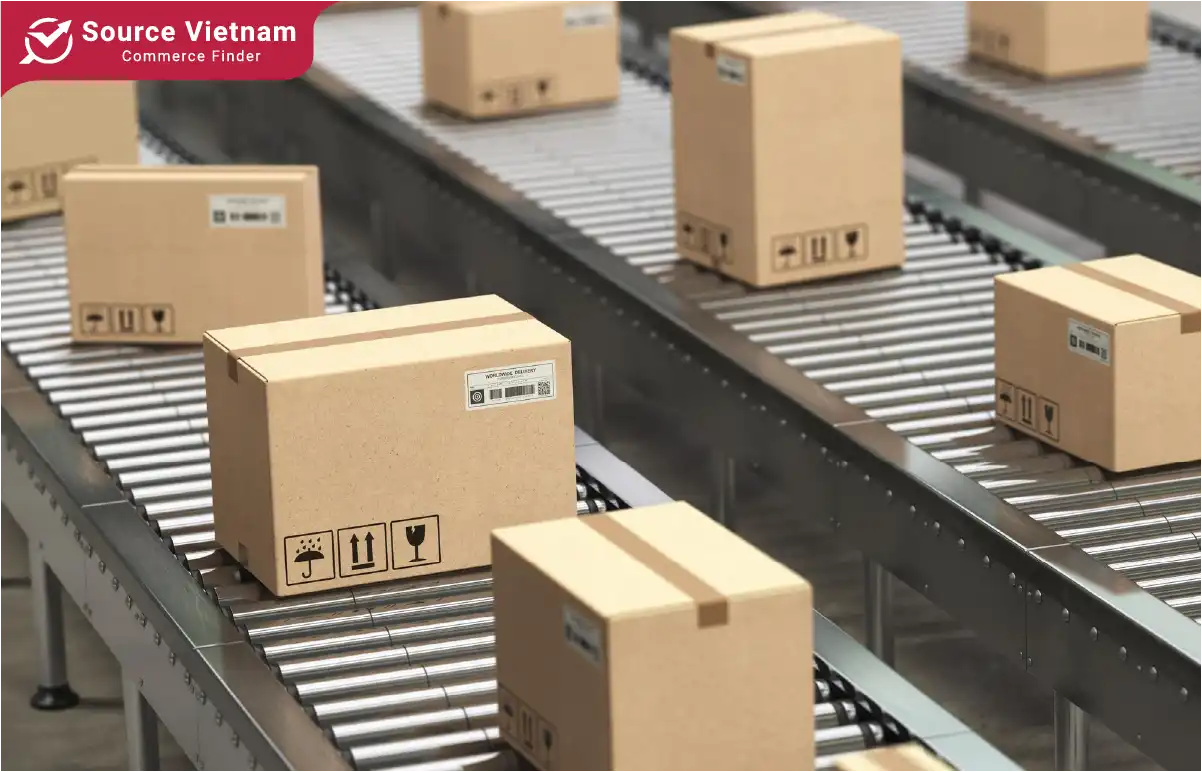
Gross weight includes net weight, tare weight, and the weight of the carrier. The gross weight of water transport is your product’s tare weight and net weight. However, gross weight for road transport is the weight of the products being transported plus the weight of the vehicle.
Add your product’s net weight to the container’s weight to calculate the gross weight. The calculation of gross weight can vary between different modes of transportation. Here are some examples:
- Air freight: The calculation of gross weight includes the aircraft’s weight, people on the aircraft, and fuel.
- Road transport: The gross weight is equal to the weight of the truck plus the weight of the body and the net weight.
- Sea freight: Add the net weight and the weight of the container to obtain the gross weight.
Mathematically, the formula for calculating the gross weight is:
Gross weight = Tare weight + Net weight + Other accessories
You can also calculate the gross weight from the net weight. Once you have the net weight, add the weight of the empty container and other accessories to the weight of your product to get the gross weight.
What is tare weight?
Tare weight, also known as unladen weight, is the weight of an empty container or vehicle. Tare weight can be either the actual or average tare weight. The actual tare weight is the actual weight of the container without any pallets or packaging. The average tare weight is the total tare weight of several containers divided by the number of containers.
Tare weight is crucial for calculating the gross weight or net weight. For example, you will get the gross weight if you add the tare weight to the net weight. You will get the net weight by subtracting the tare weight from the gross weight. The formulas for calculating tare weight are:
Tare weight = Gross weight – Net weight
You can find the tare weight printed on intermodal containers. These weights typically vary depending on the size of the container.
Difference between net weight, gross weight and tare weight
The following table will help you easily differentiate between these three weight concepts. Let’s discover the difference between net, gross, and tare weight:
| Net weight | Gross weight | Tare weight | |
| Definition | The weight of the actual product, excluding packaging, containers, or other packing materials. | The total weight of the product, packaging, containers, and all materials related to the transportation process. | The weight of the packaging, container, or means of transport when not containing any goods. |
| Formula | Net weight = Gross weight – Tare weight | Gross weight = Tare weight + Net weight | Tare weight = Gross weight – Net weight |
| Example | The weight of 1kg of rice inside a rice bag | The weight of a full carton of goods, including the carton | The weight of an empty carton |
Importance of net weight on packaging and shipping
Net weight is a critical measurement in both packaging and shipping industries for several reasons:

- Consumer information: Accurate net weight labeling provides consumers with essential information about the quantity of the product they are purchasing. This helps them make informed decisions and prevents misunderstandings.
- Regulatory compliance: Many countries have strict regulations regarding net weight on labels, especially for food and pharmaceutical products. Adhering to these regulations is essential to avoid legal penalties and maintain a positive brand reputation.
- Product consistency: Ensuring consistency in net weight across all products helps maintain brand reputation and customer satisfaction. It prevents situations where consumers receive different quantities of the same product, leading to dissatisfaction and potential legal issues.
- Cost calculation: Net weight is used to calculate shipping costs based on the shipping weight of the goods transported. Shipping weight often considers the net weight of the product and any additional packaging or materials that contribute to the overall weight of the shipment. Accurate net weight information ensures that businesses are not paying excessive shipping charges.
- Cargo capacity: Knowing the net weight of shipments helps optimize cargo capacity and ensure that transportation vehicles are not overloaded, which can lead to safety hazards and operational inefficiencies.
- Regulatory compliance: Shipping product weight regulations often limit transportation vehicles. Accurate net weight information ensures compliance with these regulations and avoids fines or penalties.
- Insurance purposes: Net weight is used to calculate insurance premiums for shipments. Accurate net weight information helps ensure that businesses are adequately insured for the value of their goods.
Read more: What Is a Blind Shipment? Explore Definition, Process, and Key Benefits
Conclusion
In conclusion, understanding Net Weight means is essential for businesses and consumers. Net weight is critical in ensuring product quality, consumer protection, and efficient operations. By recognizing its importance, businesses can optimize their processes, enhance customer satisfaction, and maintain a competitive edge in today’s market.
FAQs
What is the difference between net weight vs gross weight?
Net weight is the actual weight of the product itself, excluding any packaging, containers, or product labels. Gross weight is the total weight of the product, including its packaging and labels combined.
What does net weight mean in food packaging?
In food packaging, net weight is the actual weight of the food product inside the packaging, excluding the weight of the container or any additional materials like packaging or labels. It’s the amount of edible product you’re paying for. This information is typically listed on the front of the food packaging and the total weight. Understanding net weight helps consumers compare prices and quantities accurately.
Are there regulations governing net weight labeling?
Yes, many countries have regulations governing net weight labeling to ensure accuracy and consumer protection. For example, in the United States, the Federal Trade Commission (FTC) and Food and Drug Administration (FDA) have guidelines that require net weight to be clearly displayed on packaging, using standard units of measurement such as grams or ounces.
How should net weight be displayed on product packaging?
Net weight should be prominently displayed on product packaging, typically on the front label or principal display panel. It should be easy to read and accompanied by a unit of measurement (e.g., “Net Weight: 16 oz” or “Net Weight: 500 g”). The font size and placement must comply with regulatory guidelines to ensure visibility and clarity for consumers.


